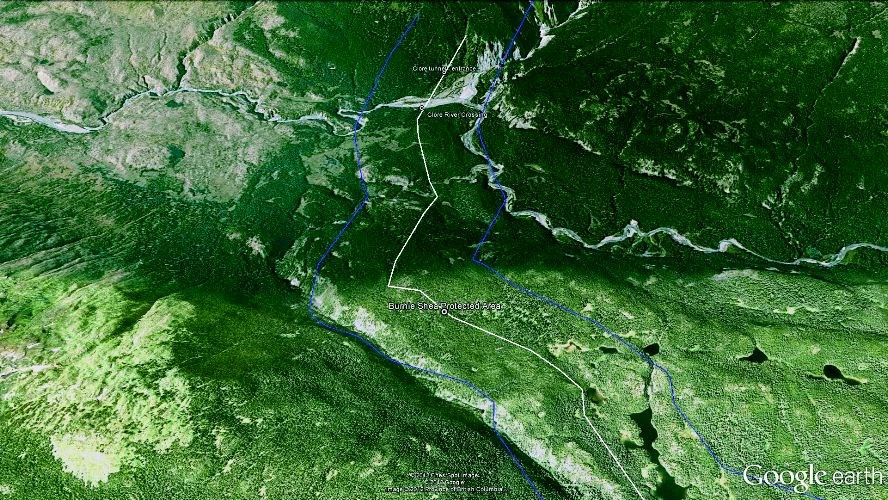Northern Gateway successfully blocked the province from showing a short video Wednesday during environmental assessment hearings into its proposed pipeline.
The province produced a pair of videos of the Clore River using Google Earth to illustrate the challenging terrain the company could face in the event of a spill. The videos were to be used as part of a hypothetical spill situation the province wanted Northern Gateway to address.
Before the videos were shown, Northern Gateway lawyer Dennis Langen objected on the grounds that the video didn't fit within the framework of the process and that it didn't meet the Joint Review Panel's goal of efficiency.
Panel chairwoman Sheila Leggett agreed with Langen and said since the three-member group had seen the site in question, there was no need to show a video.
Christopher Jones, a lawyer for the province, argued the video could be a benefit to any British Columbians who were participating the environmental review process, either in the room or via the Internet, but Leggett overruled him.
Northern Gateway president John Carruthers said the lawyers were right to challenge the province on the use of the visual aid.
"It's a very thorough process," Carruthers said. "But then they have to have rules about how this process can be done efficiently. So I assume the board ruled on that aspect.
"Certainly there's a lot of information there, it's been very open for people to put the information on the record and have it tested, but once we get into these hearings there's a process they have to follow to make sure it's efficient."
Despite the fact the video couldn't be shown, the province went ahead with questions about their spill scenario. Jones painted the picture of a full bore rupture at night in the late fall or early winter when the pipeline is covered in heavy snow, but no ice has yet to form on the the Clore River. In his scenario, Jones said it the closest valves were closed 13 minutes after the rupture, the maximum Northern Gateway has said is possible.
"This is possibly the most challenging area along the route," Northern Gateway expert witness Elliott Taylor said. "You've chosen the worst case."
Taylor went on to explain that in this hypothetical case, once the valves were shut off, Northern Gateway would send crews both from the west and the east to the site. Since the spill is happening at night, the crews would have to use ground transportation rather than helicopters.
Those coming from the west would travel through the tunnels the company is planning to bore through some mountains, while those coming from the east would use conventional roads. Both teams many need to use snow machines to actually reach the site of the spill.
Once the source of the leak was located, Taylor said Enbridge would set up control points and pre-selected locations along the river. Other company personnel would head downstream to begin to set up protective measures as the oil moved along with the current.
As responders reached the scene, Taylor said they would be evaluating what needed to be done and what other resources would need to be sent to the site.
A spill of this size would also trigger the company's 200-member special spill response team, who would be sent to the location of the release from their bases across North America.
Northern Gateway was unable to say how long the entire deployment would take.



